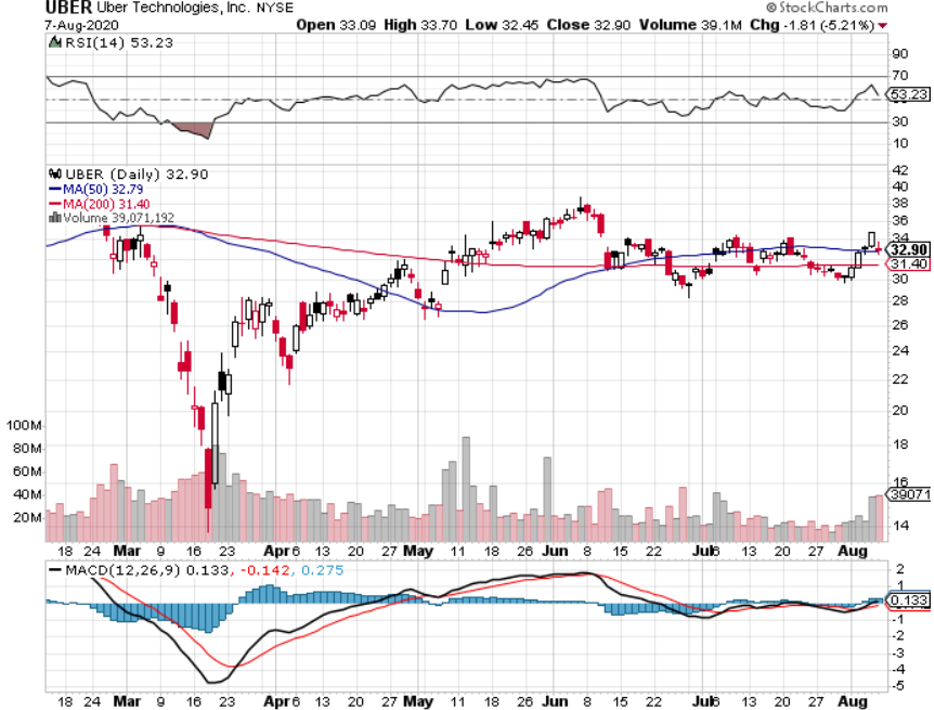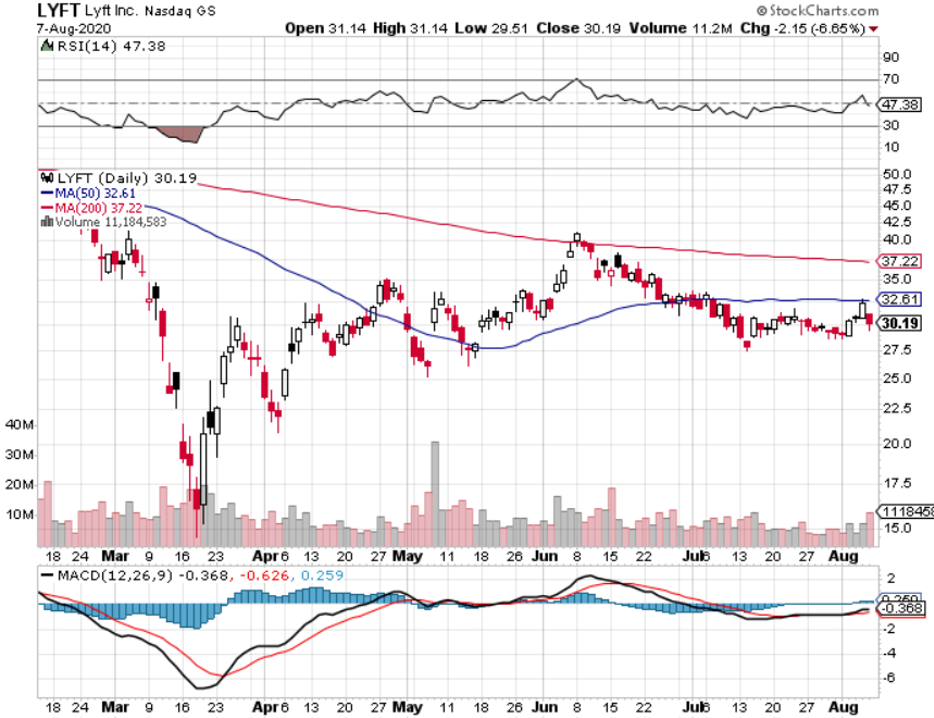The coronavirus and the resulting effects from it have had the single most sway on tech companies since the 2001 tech bust.
Marginal tech companies or even quasi-fraudulent ones have been exposed for what they are, while the secondary effects from the virus have supercharged the behemoths of the industry.
The stock market has no earnings growth in the past 5 years without the earnings from Microsoft (MSFT), Facebook (FB), Apple (AAPL), Google (GOOGL), Amazon (AMZN), and Netflix (NFLX). That means that without the Republican corporate tax cut, there has been negative earnings growth in the past five years.
One of those tech companies at the bottom of the barrel has been chauffeur service company Uber (UBER) and their latest earnings report is a glaring indictment of a shoddy business model that operates in a gray area.
The only reason this stock is at $33 is because of the piles of easy money printed by the central bank.
Uber needs all the help they can get, and shares are still trading 20% below the IPO price.
Competitor chauffeur service Lyft (LYFT) is doing even worse registering a 50% decline since the IPO.
Let’s do a little snooping around to see why these companies are doing so poorly and why you shouldn’t even think about investing in these companies long-term.
No matter how you dice it up, Uber’s core business, the one where they refuse to properly compensate their drivers, had a disaster of a quarter with gross ride volumes down 73% year-over-year.
Before we go any further with this one, I would like to point out yes, other areas of the business grew substantially, the problem is that the “other” part of the business is only 30% of total revenue.
Therefore, when 70% of your business that relies on pure volume to scale out crashes by 73%, it doesn’t really matter what else is in the report.
The only sensible idea now is capturing a snapshot of the silver linings, of which there were a few.
Delivery volumes through Uber Eats were up 49%, but the problem here is that first, it’s not profitable per delivery and second, it’s still a small part of the business.
Uber acquired Postmates who is another loss-making delivery service and the idea behind this is to achieve significant cost savings by scaling out these powerful assets.
The problem here is that it is essentially throwing good money on top of bad money because it’s proven that deliveries don’t make money per ride and that won’t change in the near future.
CEO of Uber Dara Khosrowshahi is on record saying Uber will become “profitable on an adjusted earnings basis before interest, taxes, depreciation, and amortization before the end of the year.”
This is almost like saying we won’t lose as much money as before and ironically, Dara Khosrowshahi has withdrawn this statement as the ride-sharing model has been repudiated by the consumer during the coronavirus.
Nowhere in the earnings report is the explanation of how Dara Khosrowshahi plans to attract people to share a car ride with a stranger during a global pandemic.
He didn’t share a solution because there isn’t one, hence the 73% decline in ride volumes.
If we assume this company is semi-fraudulent, then the silver lining would be that ride volumes didn’t decline by 100%.
That is where we are now with U.S. corporate companies such as the airlines that fired their employees but have subsidized them to stick around even though there is no work.
Instead of re-imagining itself through bankruptcies, the Fed has encouraged many marginal companies by breathing life into their finances through cheap loans.
This gives failing firms a last chance to enrich management with the capital and “cash out” before they hand the business off to someone who will essentially plan to do the same.
I will say that traders might have a trade or two in this one, because it’s hard to imagine Uber posting another 73% loss in ride volume and a dead cat bounce trade could be in the cards.
Long term investors should steer clear of this one and allow Uber to struggle on its own and just maybe in 5 or 10 years, it might just be “profitable on an adjusted earnings basis before interest, taxes, depreciation, and amortization before the end of the year.”
With so many high-quality tech companies and even one that is about to add super growth elements like TikTok into its portfolio, there are so many superior names to deploy capital in the tech ecosphere.
Either you must be galvanized by a gambler’s mentality to invest in Uber, or losing money is something that is habitual in your routine.





